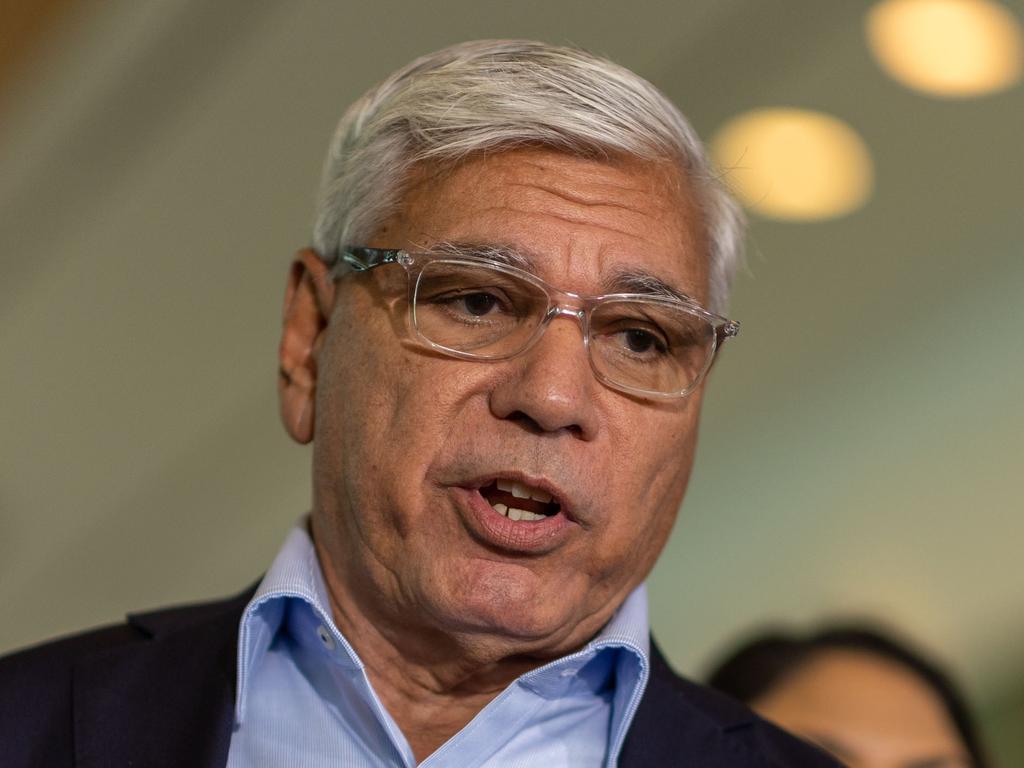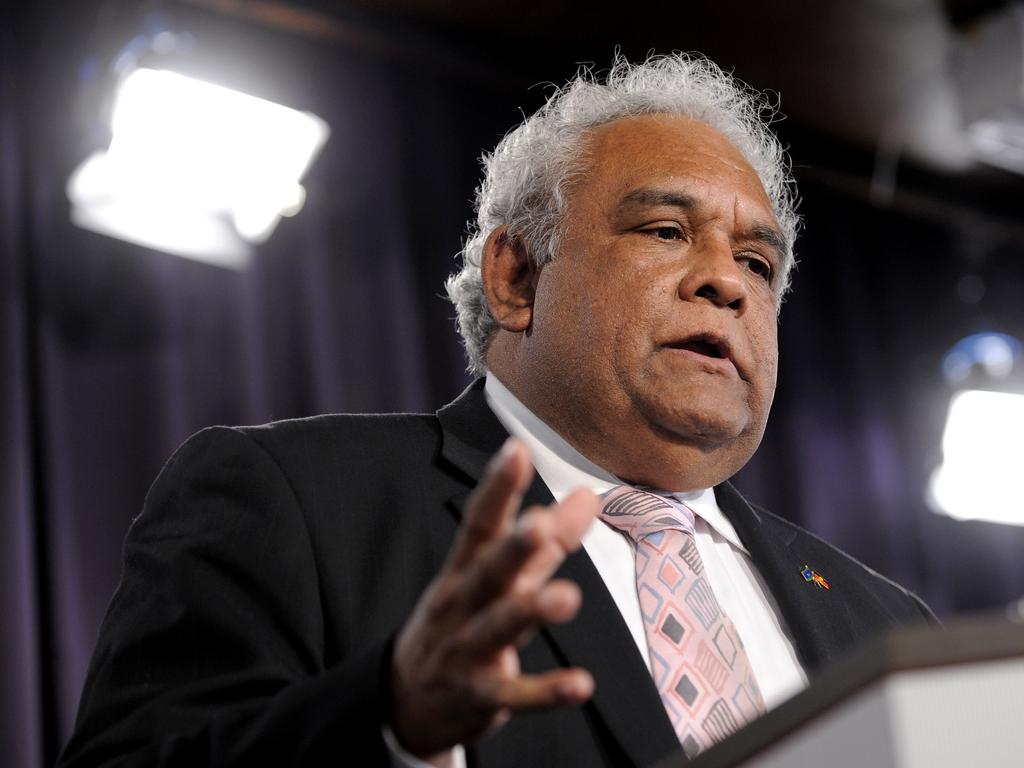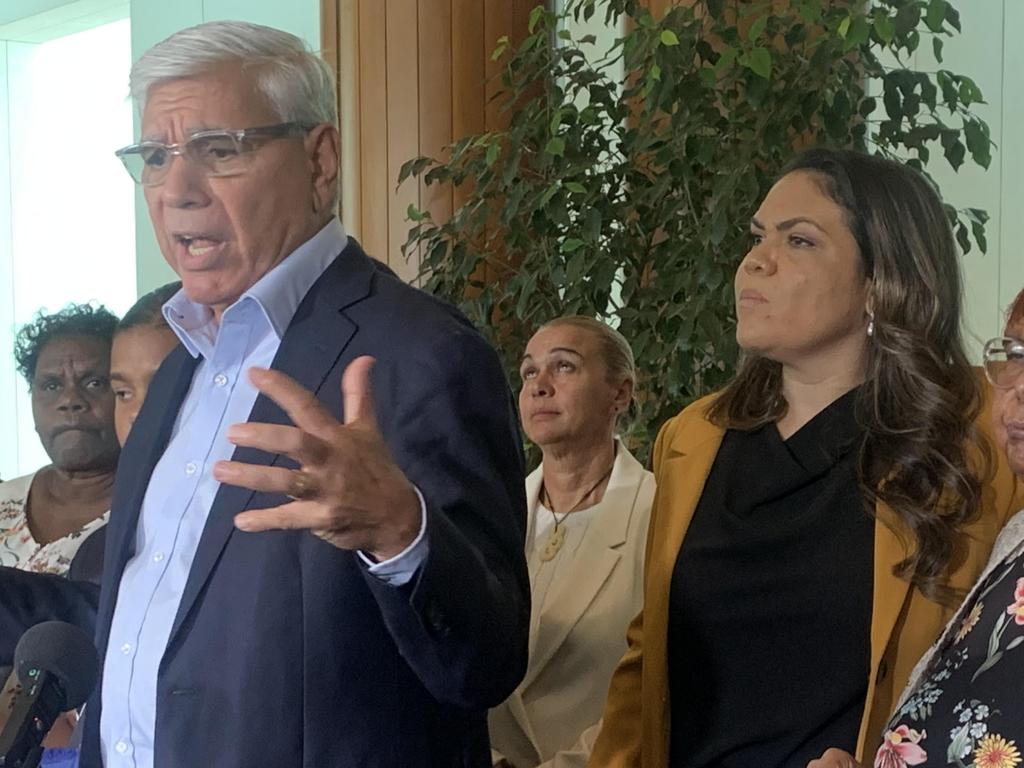So many clashing voices, so little of worth achieved, writes Nyunggai Warren Mundine

At 270 pages long the report makes for impenetrable reading. All for a supposedly advisory body with two dozen members. No other Australian government body or agency takes this long to explain.
That’s because the voice is not an advisory body. It is a vast, expensive new bureaucracy that will interface at every level of government.

The report outlines the structure of the voice to parliament as existing on three levels. Regional voices choose members of the national voice. And there are local voices that suddenly occur in the document without any introduction or explanation. I’m still not sure who the local voices will be or their function. Perhaps they will somehow make up the regional voices, but it’s not clear how this will happen, except to say they will be constructed around a process and principles.
It will be a long journey to get there. The process involves formal commitments from governments that translate into expected legislative processes at the state and territory, and also local government, levels.
Those of you who thought that some commonwealth legislation after the referendum was the end of it, think again. What’s proposed isn’t just legislation to establish a national voice. It is a “whole of government” co-ordination and collaboration with local and regional voices that will involve even more legislation.

A key purpose of this legislation is to set out “the recognition process and assessment criteria”.
This is legislation we currently know nothing about.
But it doesn’t stop there. There will be “a joint process between a prospective Local & Regional Voice and relevant governments to prepare for recognition, followed by an independent party verification of the assessment”. Who is this unknown “independent party”, or indeed many unknown relevant parties, that will guide ministers in their decision-making over the legislation that provides this recognition? And for a process so all-encompassing who’ll be left that’s independent?
The regions for the regional voice structures have yet to be determined. The original recommendation was for an arbitrary 35 regions, now reduced to 22 entirely new artificial regions imposed on Indigenous Australia. Each will appoint one member of the national voice, with the government appointing the remaining two.
Communities and governments will work together to negotiate the breakdown of the regions, “based on agreed parameters and guidance”. Is this bureaucratese for being dictated to? I can tell you now there’s no easy way for agreement over the boundaries of these regions or among the groups actually expected to coexist within them.
These regions bear absolutely no resemblance to the traditional owner groups and first nations and each contains a huge number of Aboriginal organisations. In a scathing observation in its submission to the Calma-Langton co-design group, Ngaanyatjarra Council said this could “effectively nullify authentic Indigenous voices, rendering them meaningless”.

The process also includes what is referred to as “transition to voice structures” with each regional voice and local voice to “build on existing arrangements”. What existing arrangements? No arrangement exists for appointing a representative in Canberra. Where there are none there will be a process of “designing the arrangements” by community-led “design groups”. Are we to have 22 more of these turgid design reports that take years and cost millions to produce?
Communities across each region (are these the same as the local voices?) will be supported to establish their own arrangements. Arrangements for what? Is this a means to choose the regional representatives to go to Canberra to sit on the national voice? Some other things this tome had no space for.
The report continues: “There will be structured, documented and transparent partnership arrangement between a Local & Regional Voice and governments, consistent with the principles. This includes agreed dispute resolution processes, including third party mediation as needed.” I can tell you now the disputes and mediation part of this function is going to be very busy.
Each local and regional voice will be supported by a secretariat or “backbone” team in each region. All have their own relationships with government agencies and departments that Anthony Albanese has promised will “need to seek written advice from the voice early in the development of proposed laws and policies”.
The mind boggles. Nine principles will dictate the implementation. All are complex and multilayered. The local voices and regional voices – not to mention the departments and agencies – will need to have more than a PowerPoint introduction to these principles. Perhaps another 300-page report?
The voice won’t just be some grand, meaningless gesture. It will be enormously costly and complex, and there’ll be chaos and confusion in its development. And to what end? Aboriginal people need less bureaucracy in their lives, not more. A 24-member advisory body is just the tip of a very large iceberg that Australia is hurtling towards like the Titanic.
Nyunggai Warren Mundine is director, Indigenous Forum, Centre for Independent Studies, and president of Recognise a Better Way. Acknowledgments to academic, historian and Warraimaay woman Vicki Grieves Williams for her research and contribution to this series of articles.







This year Australians will vote at a referendum for a constitutionally enshrined Indigenous voice. But the Albanese government refuses to discuss the details, pointing us to the 2021 Indigenous Voice Co-design Process report by Tom Calma and Marcia Langton.